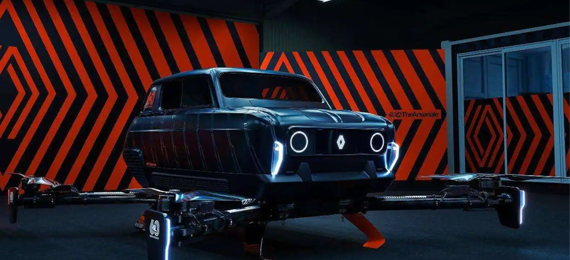
Renault’s flying car prototype is all over the news and here is everything you need to know about the prototype, its build, cost, safety, and more with a quiz.
Renault Cars
Renault was founded by Louis Renault, Marcel Renault and Fernand Renault in 1899. The French automobile manufacturing business produced trucks, tanks, tractors, aircraft, aircraft engines, buses, and coaches.
Renault Car Models
‘Quatrelle’ was famously named Renault 4 or 4L. The ergonomic car was produced from 1961 to 1994. This classic was one of the most produced hatchback cars in history. It was also Renault’s first front-wheel car. A front-wheel car is where the engine controls only the car’s front wheels while the back wheels fall into motion.
Are Flying Cars Legal?
- A. Yes
- B. No
This retro trendsetting station wagon termed as the ‘blue jeans’ of transportation is once again in the market and you will be baffled to know why.
Flying Cars
Flying cars has always been the dream of many. The first-ever attempt to make a flying car was in 1971. Glenn Curtiss invented the flying car that was much similar to a two-seater aircraft.
Russia’s Nitra and Bratislava, designed by Prof Stefan Klein, was the first flying car to complete a successful test flight. The car flew at the height of 8,200ft (2,500m), 1,000km (600 miles), and had clocked up 40 hours before landing.
Renault’s New Flying Car
The Renault 4L is 60 years old in 2021 and for its 60th birthday, the car that introduced many teenagers into the world of driving is now setting its foot into the world of flying cars along with Hyundai, Uber Air, AirBus, and Lamborghini.
Renault in collaboration with TheArsenale, designed the AIR4 flying car. The car is not altered completely, and the company has replaced all 4 wheels with four two-blade propellers.. The vehicle will be available for public display in Paris at the Atelier Renault museum.
Flying Car Specifications
It has a landing velocity of 6.7 mph (3 m/s – 4.82 km/h) powered by 22,000 mAh lithium polymer batteries with a total capacity of 90,000 mAh. It further possesses a horizontal top speed of 58 mph (26m/s – 93 km/h), with a 45° inclination during flights and a maximum inclination of 70°. It can fly around 2,300 ft (700 m) with a take-off speed of 31 mph (14 m/s – 50 km/h).
Why Don’t We Have Flying Cars in the Market Yet?
Cars are supposed to be heavy and wide to stay grounded, while aircraft, light and narrow for a smooth flight. The basic requirements like side-view mirrors, steering wheels, and other hardware could create an unnecessary drag, increasing fuel consumption.
The world is currently moving towards a ‘net-zero’ emission in the wake of rising global warming and Co2 emissions and a flying car that consumes more fuel is just an expensive mistake for many. Moreover, these cars would need a lot of space for take-off and landing, and the usual highways are not capable of accommodating such needs.
Sweden has created a pilot license-free program for potential buyers where you can buy a one-seater flying car for $92,000. You can get to watch these flying cars in action in racetracks by 2022 if things go according to the plan, though.